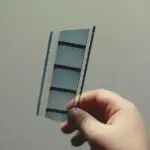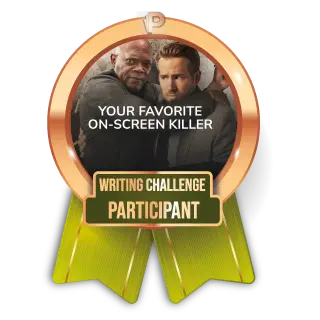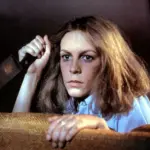Netflix has never been one to shy away from making shows that encourage conversations. Mindhunter taught us about the psychology of well-known serial killers, and Baby Reindeer broke the taboo of male sexual abuse and stalking. This year, a new Netflix miniseries, Adolescence, is only four episodes long and is the most thought-provoking series I've seen this year.
A Gripping Tale of Crime and Consequence

As soon as the show starts, Adolescence has the police break into a scared Jamie Miller's home and take him into custody. He's been accused of murdering his classmate, Katie, with a kitchen knife. Instead of a typical murder-mystery story where it's a whodunit, this is actually a whydunit.
We know from the end of the first episode that Jamie is the one who killed Katie. The police force Jamie and his father to watch CCTV footage of the 13-year-old committing the murderous act. But, you'd think that looking at this loving family living in a nice suburban English town, Jamie couldn't possibly commit the crime. Jamie's been brought up by two loving parents going to a normal secondary school. Why would he resort to murder? That's what the crime drama series explores as well as the consequences dealt with by Jamie and his family.
The One-Shot Wonder

In a traditional show, a film crew keeps the camera rolling until a director yells “Cut!” or an actor flubs their lines. Then, each shot is cut and edited together. In the case of Adolescence, each episode was filmed in one shot. No cuts. If a mistake was made, the camera kept rolling. Just like in a theater performance how the entire run must be flawless with no room to stop and start over.
Here's how it worked: One episode would be a three-week process. Rehearsal took one week. Then, there would be a week of tech rehearsal where the cast and crew were present. Once it came to filming, director Philip Barantini dedicated the final week to do two takes a day, which would mean picking from 10 different shots that would make it to the final cut. You can look below at exactly how many takes each episode was:
From a technical stance, the team attached a camera to a drone that would ascend to provide a birds-eye view of the English town. Every camera movement was deliberately mapped out with cinematography by Matt Lewis, resulting in a choreographed “dance” between the actors and the camera. By having each episode be in one shot, it provides a realism like when a cameraman films a documentary of events happening in real time.
The one-shot technique successfully builds the tension and shows you everything that is happening compared to cutting to what's happening to one character in one location and then a different character in another. You knew if you saw the family, the camera would follow the family. If the camera followed Jamie, it would be about Jamie and vice versa. Check out how filming was done with the intense chase scene in episode two:
Stellar Standout Performances That Stay With You

Veteran actor and co-creater/co-writer of Adolescence, Stephen Graham, played Jamie's father, Eddie. You can't help but feel your heart break for this poor father. Especially in that final scene of the series. He perfectly portrayed a grieving father who constantly questions his own actions or what he could have done differently to have prevented his son's actions. The scene after Eddie looks at the CCTV footage would have to be my favorite moment of his. He can't even look at his son, but he still decides to pour everything into one big hug to Jamie, knowing it could be their last loving moment together.

The Queen's Erin Doherty was superb as forensic psychologist Briony. Set to do a psychological profile on Jamie to give to the judge, she ends up in a chess match with the child delinquent. I loved how subtle her actions were. She could have easily given a performance as explosively as Owen Cooper and tried to compete with his big actions. Instead, her calmness could hit an audience like daggers, as well as the stern tone she uses to address her needs without ever shouting. Doherty made it very easy to sympathize with Briony in trying to understand an explosive kid but conveyed the emotional tone and complexity of a psychologist's work.

Last but definitely not least, Owen Cooper was my favorite actor in the series. As soon as you meet his 13-year-old character, you feel sorry for him being dragged to the cop shop. He portrayed that innocence so well that there's no way he could have committed the crime. But then, he double whammies us with a twist in Jamie's character that I haven't seen since Edward Norton's performance in Primal Fear. Cooper brought out a complexity in Jamie that we could easily call him a kid who made a dumb choice or a deranged kid with a deep terror inside of him that no one could have seen coming. For a first-time actor, he sold it, and I'm sure greatness will continue to come to him.
Themes That Mirror Society

The gripping narrative of Adolescence introduces themes that resonate with parents and youth. It forces us to give the internet activities of teens a second look, as what's posted online has the potential to shape negative thinking.
In the theme of toxic masculinity and its consequences, Jamie was exposed to violent, misogynistic content. He was introduced to incel emojis like the red/blue pill that theorizes 80% of women love 20% of men. After Jamie gets rejected by his classmate Katie and she cyberbullies him with incel emojis, Jamie should have found healthier outlets online to deal with his rejection. Instead, he was exposed to toxic spaces that encouraged male aggression.
Given that Jamie's parents had no idea about their son's online life, it raises the question of whether or not parents should have a bigger role in their kid's online activity. We also wonder if we should be encouraging our kids to talk more about what's going on with them so they don't have to turn to online groups for connection.
Critics and Audiences Love Adolescence

Currently, Adolescence has a 99% critic score on Rotten Tomatoes and a 73% from audiences. Praises are coming from the miniseries' fascinating story and its technological innovations.
The show is so profound that there have been talks about the series needing to be screened at schools and even in Parliament. Within two weeks of its debut, Adolescence scored 66.3 million views, showing how popular the show is on a global scale.
Why Adolescence Is a Must-Watch in 2025

Despite the praises that critics and audiences are sending to Adolescence, you need to watch the Netflix miniseries for the importance of learning about the dark web. Social media, cyberbullying, and the incel culture are very easy to get absorbed into. Especially when kids spend a big portion of their time online, they need to be aware of what they're looking at. Not everything that's shown online is safe.
Parents can watch this show and be more involved in their children's lives. To not be afraid to ask them questions or be afraid they're prying. When a young child has all of these feelings and doesn't know how to navigate them, they have the potential to turn to violence to get power.
Through Adolescence, your heart will break through these magnificent performances of situations that have occurred in the real world. But you must watch these powerful four episodes to learn that engaging in a healthy dialogue can make all of the difference in the world.





















































View replies 3
View replies 0